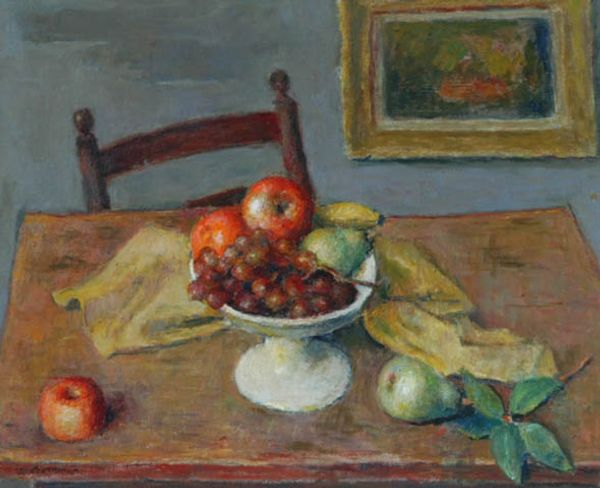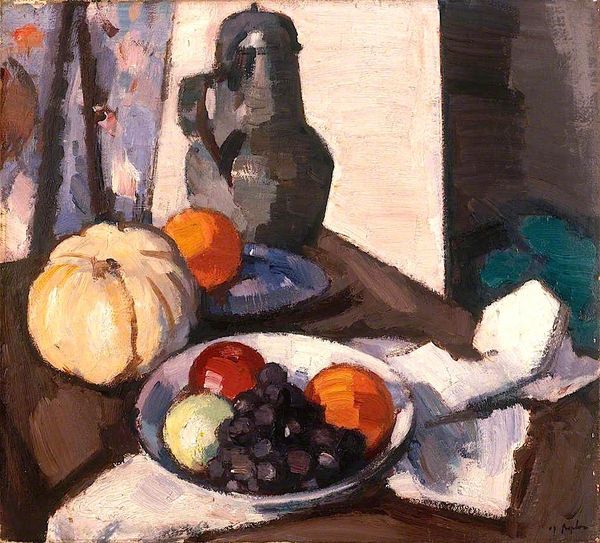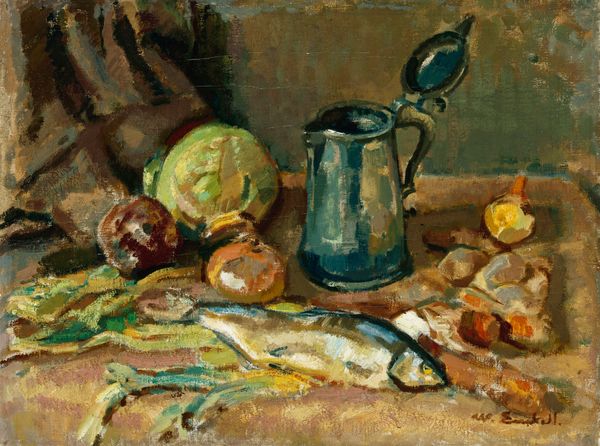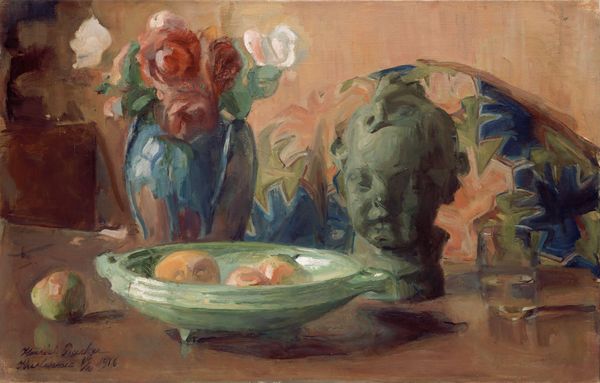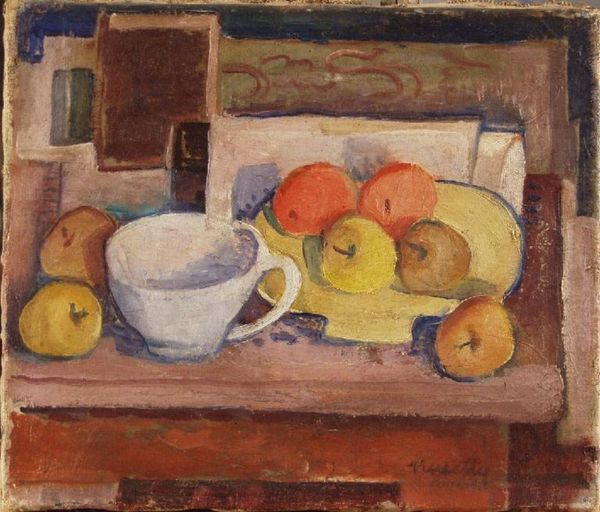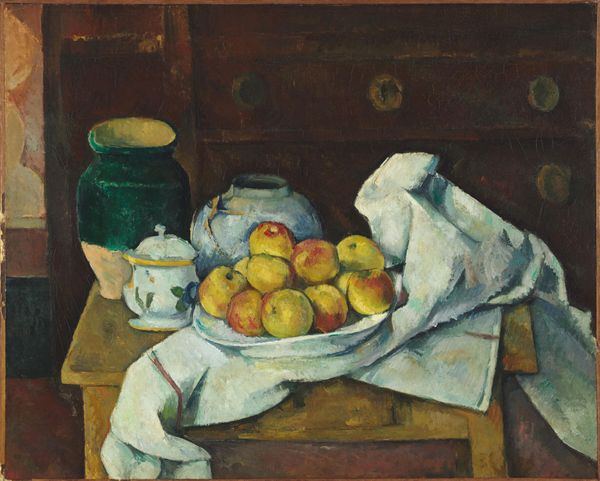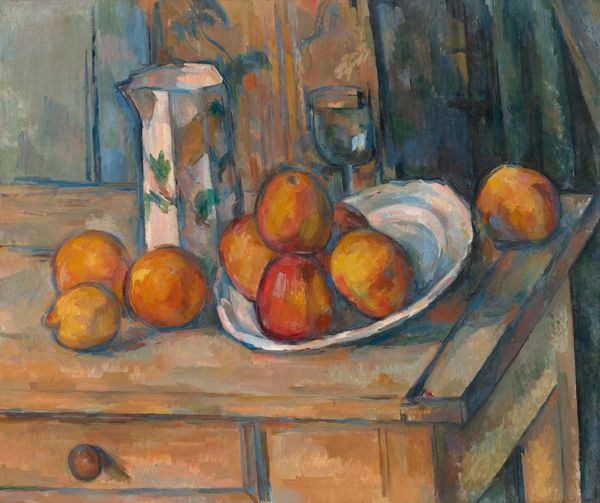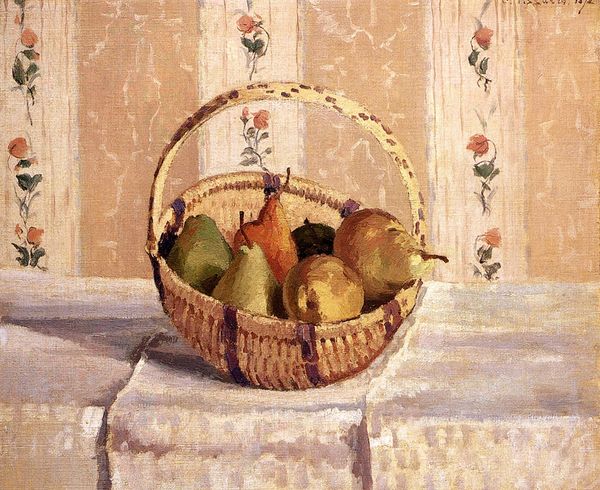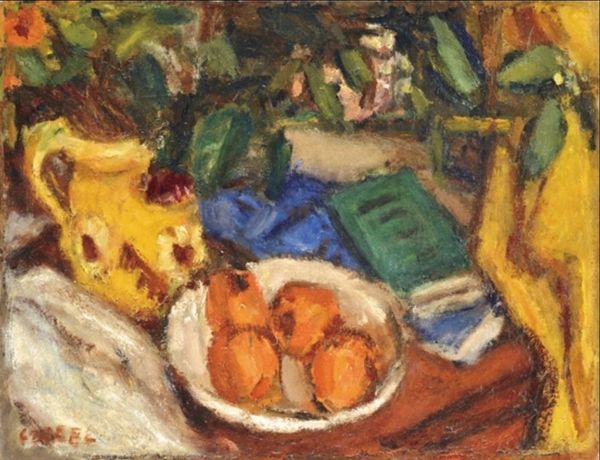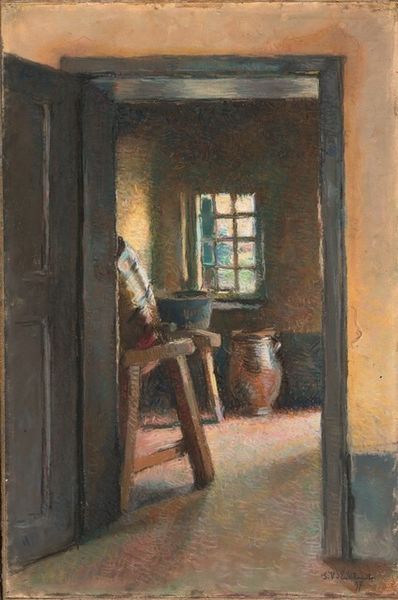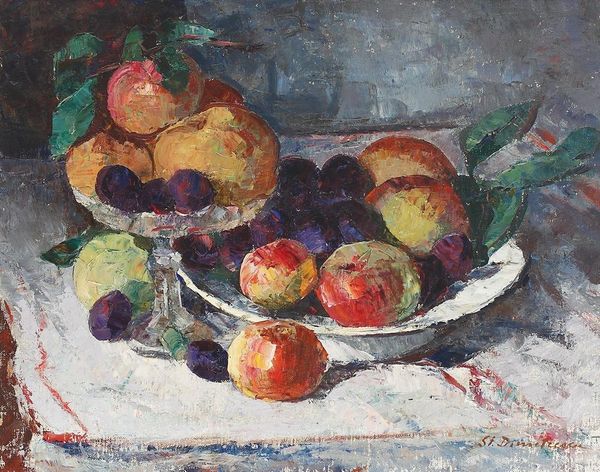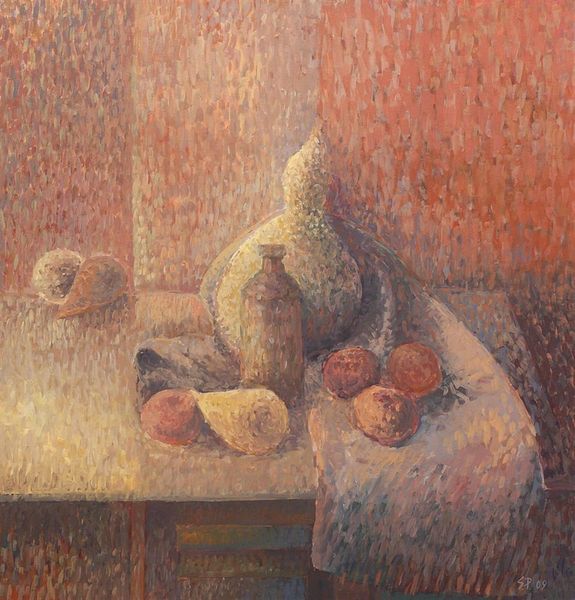
painting, oil-paint, impasto
#
painting
#
oil-paint
#
oil painting
#
impasto
#
intimism
#
modernism
Dimensions: 55.1 x 46.3 cm
Copyright: Public domain
Curator: Roderic O’Conor, a painter well-versed in Post-Impressionist techniques, completed "Still Life with Bowl of Fruit by a Window" in 1924. The oil painting, which employs impasto, is currently housed here at the Courtauld Gallery. Editor: My immediate impression is one of profound domesticity. The somber palette, coupled with the everyday objects, exudes an air of comfortable introspection, perhaps tinged with a bit of melancholy. Curator: It is precisely that tension—the comfort existing beside the slightly drab coloration—that captures the nuances of intimate scenes. The arrangement creates diagonal axes, particularly through the positioning of the dark beam against the pale pottery. Editor: And the pottery itself... its form evokes ancient storage vessels, and vessels as carriers have immense psychological significance across many cultures; containers for sustenance and also for secrets, for histories held privately. Even the placement, partially obscured by the fruit, heightens the sense that some part remains hidden. Curator: The density of the impasto brushstrokes certainly reinforces this sense of tangible weight—materiality elevated. If we delve deeper into its modernist roots, this tactile approach distances itself sharply from academic gloss, placing primacy on lived experience. Editor: The fruit appears almost archetypal; it recalls the myth of Pomona or Eve's forbidden fruit and embodies an almost unconscious understanding of plenty. Yet, placed alongside a dark background, the bowl’s offering suggests time's inexorable advance, mortality lingering just beyond ripeness. Curator: Agreed. O'Conor's technique mirrors Modernism’s rejection of superficiality in favor of substantive aesthetic inquiries; formal devices mirroring subjective realities. Editor: Exactly. Seeing O'Conor frame the scene in the soft illumination near a window really underlines the significance of familiar moments captured with such affecting sincerity. Curator: Such visual economy invites us to question the underlying principles of representation itself, while celebrating those quotidian moments of comfort we so easily take for granted. Editor: And maybe, hopefully, also inspires us to observe the humble things surrounding us as carrying hidden meaning, laden with histories of place and emotion.
Comments
No comments
Be the first to comment and join the conversation on the ultimate creative platform.
